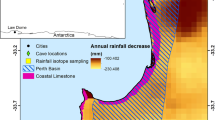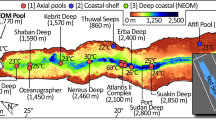Abstract
IN view of the forthcoming visit of the British Association to South Africa, we should like to direct the attention of biologists to certain remarkable inland waters occurring in that country. Throughout the southern half of the Transvaal, as well as in many other parts of South and South-west Africa, are found shallow saucer—like depressions of various sizes which may be filled temporarily or permanently with water. These pans have been ably described by Rogers,1 and are generally admitted to be the result of wind erosion at a time when the climate of the country was drier than it is at present, although Passarge2 considers them to have been the result of ‘zoogenous’ erosion in the Kalahari.
This is a preview of subscription content, access via your institution
Access options
Subscribe to this journal
Receive 51 print issues and online access
$199.00 per year
only $3.90 per issue
Buy this article
- Purchase on Springer Link
- Instant access to full article PDF
Prices may be subject to local taxes which are calculated during checkout
Similar content being viewed by others
References
South Afr. Jour. Sci., 19, p. 1; 1922.
"Die Kalahari", Berlin, 1904.
Bull. Int. Ac. Pol. Sci. Math. (B), p. 13; 1924.
"Grundlinien der experimentellen Planktonforschung. Blnnenge-wässer VI.", Stuttgart, p. 24; 1929.
"Die Binnengewässer Mitteleuropas. Binnengewässer I.", Stuttgart, p. 199; 1926.
Bishop and Clarke, "A Scientific Survey of Turner's Lake", N.Y. State Mus., 1923.
Author information
Authors and Affiliations
Rights and permissions
About this article
Cite this article
HUTCHINSON, G., PICKFORD, G. & SCHUUKMAN, J. The Inland Waters of South Africa. Nature 123, 832–833 (1929). https://doi.org/10.1038/123832a0
Issue Date:
DOI: https://doi.org/10.1038/123832a0
This article is cited by
-
Species richness, endemism and ecology of crustacean assemblages in northern California vernal pools
Hydrobiologia (1996)
-
Inland salt waters of southern Africa
Hydrobiologia (1991)
-
Rhizopodes Thécamoebiens du Vénézuéla
Hydrobiologia (1955)
Comments
By submitting a comment you agree to abide by our Terms and Community Guidelines. If you find something abusive or that does not comply with our terms or guidelines please flag it as inappropriate.



